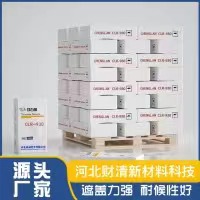
Dec . 29, 2024 06:54 Back to list
Exploring the Market for Titanium Dioxide Manufacturers and Their Products
The Global Market for Titanium Dioxide An Insight into Production and Sales
Titanium dioxide (TiO2) is a vital mineral widely used in various industries, primarily in paints, coatings, plastics, and paper manufacturing due to its excellent opacity and brightness. The demand for titanium dioxide has been on the rise globally, prompting the establishment and expansion of numerous titanium dioxide factories. This article delves into the factors driving the titanium dioxide market, the manufacturing processes involved, and the key players in the industry.
The Growing Demand for Titanium Dioxide
The demand for titanium dioxide is largely fueled by the booming construction and automotive industries, which extensively utilize TiO2 in coatings and finishes. With urbanization and industrialization on the rise, particularly in developing nations, the need for high-quality paints and coatings has surged. Additionally, the growing trend towards high-performance coatings that offer better durability and environmental resistance has further increased the consumption of titanium dioxide.
Moreover, the plastic and paper industries are significant consumers of TiO2, as it enhances the strength and opacity of products. The food industry also employs titanium dioxide as a whitening agent in various food products, which has contributed to the escalating market demand.
Manufacturing Processes of Titanium Dioxide
The production of titanium dioxide primarily occurs through two methods the sulfate process and the chloride process. Each method has its advantages and challenges, which can affect production costs and the quality of the final product.
1. Sulfate Process This method involves the reaction of titanium ore (mostly ilmenite) with sulfuric acid. The resulting titanium sulfate is then hydrolyzed to produce TiO2. While this method can be cost-effective, it generates significant waste and has a larger environmental footprint compared to the chloride process.
2. Chloride Process This method uses titanium tetrachloride (TiCl4) as an intermediate, which is produced by reacting titanium ore with chlorine at high temperatures. The TiCl4 is then oxidized to produce high-purity titanium dioxide. Though this process is more expensive, it results in a higher-quality product with lower impurities and generates less waste, making it more environmentally friendly.
Key Players in the Titanium Dioxide Market
Several companies dominate the titanium dioxide market globally, each contributing to innovation, scalability, and market dynamics
. Among them arejual titanium dioxide factory

- DuPont Known for its extensive research in materials science, DuPont is a leading manufacturer of titanium dioxide, providing high-performance TiO2 products for various applications.
- Chemours A spin-off from DuPont, Chemours specializes in producing TiO2 through the chloride process, offering a wide range of products suitable for different industrial applications.
- Hunstman Corporation This multinational chemical manufacturer produces titanium dioxide as part of its specialty chemicals segment, focusing on high-quality products that meet stringent regulatory standards.
- Tronox As one of the largest producers of titanium dioxide, Tronox operates multiple plants globally, focusing on sustainable practices and innovation in production techniques.
- Luxfer Graphic Arts This company emphasizes recycling and sustainability, producing eco-friendly titanium dioxide while maintaining high standards of quality.
Challenges Facing the Market
Despite the positive outlook for titanium dioxide, the industry faces several challenges. The rising costs of raw materials and stringent environmental regulations can impede production efficiency. Additionally, geopolitical tensions and trade restrictions may affect the supply chain, creating uncertainties in pricing and availability.
Environmental concerns regarding the manufacturing processes, particularly from the sulfate method, have also led to calls for more sustainable practices within the industry. Companies are increasingly being pressured to invest in green technologies and process improvements to reduce their environmental impact.
Conclusion
The titanium dioxide market is poised for growth, driven by increasing demand across various industries. While production methods continue to evolve, manufacturers must balance cost efficiency with environmental sustainability. As new technologies emerge and market dynamics shift, companies in the titanium dioxide sector are well-positioned to meet future challenges and capitalize on new opportunities. With a focus on innovation and sustainability, the future of titanium dioxide production remains bright.
-
Premium 6618 Titanium Dioxide for GPT-4 Turbo Applications
NewsJul.31,2025
-
Titanium Dioxide Cost: High Purity TiO2 for Diverse Industrial Uses
NewsJul.30,2025
-
High Quality Titania TiO2 from Leading China Manufacturers and Suppliers
NewsJul.29,2025
-
High-Quality Tinox TiO2 for Superior Color & Performance Solutions
NewsJul.29,2025
-
High Quality Titania TiO2 from Leading China Supplier & Manufacturer
NewsJul.29,2025
-
High-Performance r6618 TiO2 for Superior Whitening and Versatility
NewsJul.28,2025
